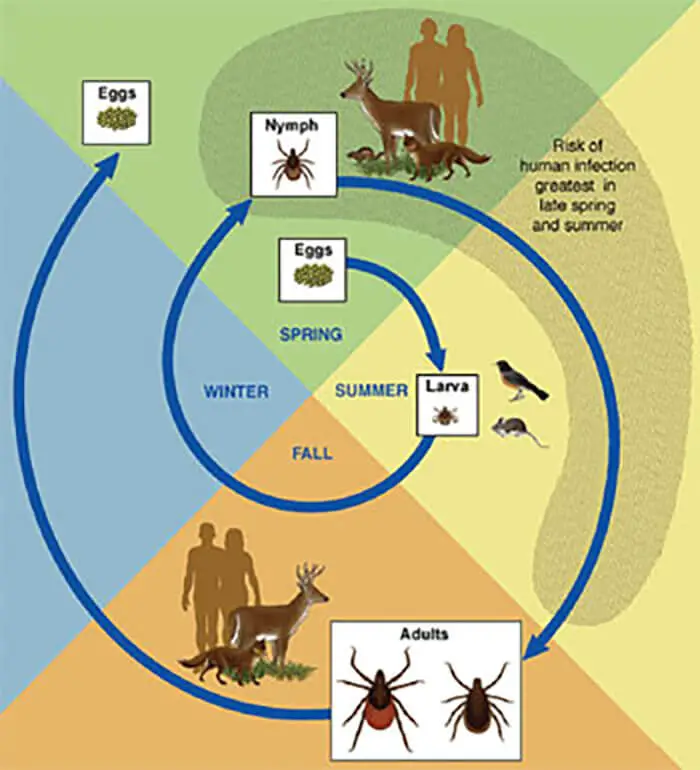Lyme Disease - Ticks Life Cycle
The life cycle of ticks which transmit Lyme disease bacterium is complex.
The life cycle of Ixodes ticks takes approximately 2 years.
Year 1
Spring – eggs are laid by adult ticks
Summer – eggs hatch as larvae. Throughout the summer and into fall/autumn the tick larvae feed on birds, mice and other small mammals they come into contact with.
The larvae become infected with the Lyme disease bacterium if they are feeding on animals already carrying the Lyme disease bacterium. Once infected, the larvae and subsequent tick remains infected for life. As the infected larvae continues to feed it also infects its hosts.
Winter – tick larvae remain mostly inactive following feeding during summer and fall

Year 2
Spring to Summer – tick larvae change into nymphs. Tick nymphs seek blood meals from animals to provide sufficient food for growth.
Feeding on small bird and mammals continues from late spring into early summer.
If they come into contact with humans (often through humans brushing past tick infested vegetation), they will also feed on them (and infect them if the ticks are already carrying the Lyme disease bacterium).
Fall / Autumn – tick nymphs molt into adult ticks.
During this season and also in early spring, the adult ticks feed and mate on larger animals including deer. If any passing humans are available female adult ticks will also feed on them too.
Early Year 3
Spring – During spring female adult ticks lay their eggs on the ground.
This completes the tick life cycle. By understanding the tick life cycle scientists gain a better understanding of the risks in getting the disease and can take more effective steps to prevent the spread of Lyme disease.